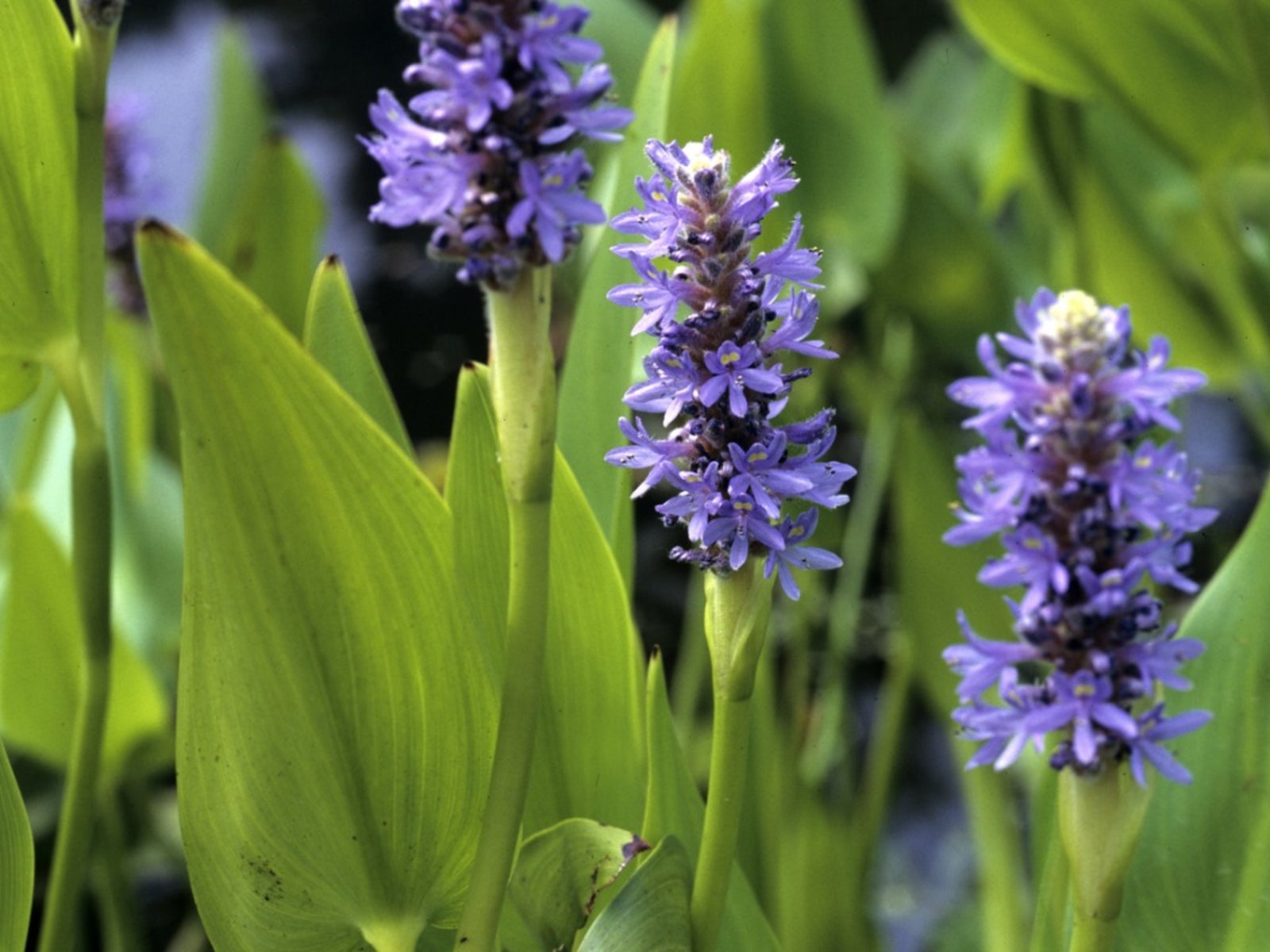Caring For Pickerelweeds - How To Grow Pickerel Rush


Pickerel rush (Pontederia cordata) is a native North American plant with a wide zone range in USDA plant hardiness zones 3 to 10. The plant may become invasive due to a rhizomous rooting system, but it is an attractive plant that bears blue spiked flowers from early summer well into fall. Pickerel rush care is easy and the tenacious plant is an unusual addition to riparian zones and along home ponds. Few tips are necessary to learn how to grow pickerel rush, but this semi-aquatic plant is worth a try if you plant it in a submerged pot to prevent unwanted spreading.
About Pickerelweed Plants
Pickerelweed plants are rushes that are closely related to grasses. The plants are in the family Pontederia, named after an 18th century botany professor. These plants grow in clumps with thick to flat stems. The foliage is glossy and dark green with a heart-shaped leaf and grows 24 to 30 inches (61-76 cm.) high. Stems on mature plants arch gracefully on water grown plants. The flower spires are a deep to soft blue and rise several inches (8 cm.) above the body of the rush. Decorative and useful plants for around the home water feature should include pickerel rush for ponds because of its ease of care and hardiness. When the plant is partially submerged, the floating leaves provide important shade to prevent excess algae growth. They also form a network of foliage in which fish can hide.
How to Grow Pickerel Rush
You can share new starts of the plant with friends easily. Divide the rhizomes in late winter to early spring. Simply dig up the plant or remove it from its pot. Use a clean sharp soil knife or pruners to cut apart the roots, leaving each piece with several healthy leaves and thick rhizomes. Replant the new clumps and they will take off quickly, increasing your pickerel weed inventory. You can also save and dry the seeds from the plant to start inside in flats in late winter. Seeded plants can take several seasons to produce the bright flowers. Caring for pickerelweeds once the seeds have germinated just requires consistent moisture and bright sunlight. Plant outside in spring.
Pickerel Rush Care
Negligence is the word of the day in caring for pickerelweed plants. These unfussy little rushes can tolerate almost anything except full shade and drought. Pickerels should be kept in deep pots where the roots can remain moist. You can also submerge the entire pot and just let the broad leaves float out around the plant. Pickerel rush for ponds performs best when soils are heavy and rich. Loamy soils with moderate to slightly acidic pH create the best growing conditions for the plant. Pickerelweed plants that are grown in pots thrive in potting mix blended with a good quality topsoil and peat.
Gardening tips, videos, info and more delivered right to your inbox!
Sign up for the Gardening Know How newsletter today and receive a free copy of our e-book "How to Grow Delicious Tomatoes".

Bonnie Grant is a professional landscaper with a Certification in Urban Gardening. She has been gardening and writing for 15 years. A former professional chef, she has a passion for edible landscaping.
-
 4 Superfast Composting Methods: Turn Waste Into Garden Gold In 30 Days Or Less
4 Superfast Composting Methods: Turn Waste Into Garden Gold In 30 Days Or LessTry the fastest composting methods to turbocharge your pile and transform kitchen scraps and garden waste into finished compost in just a few weeks.
By Mary Ellen Ellis
-
 Best Spider Plant Soil – Complete Soil Guide And Expert Tips For Keeping Plants Happy
Best Spider Plant Soil – Complete Soil Guide And Expert Tips For Keeping Plants HappySpider plants are fun and easy plants to grow, but what is the best soil for a spider plant? Selecting the right soil is important so they can thrive.
By Bonnie L. Grant